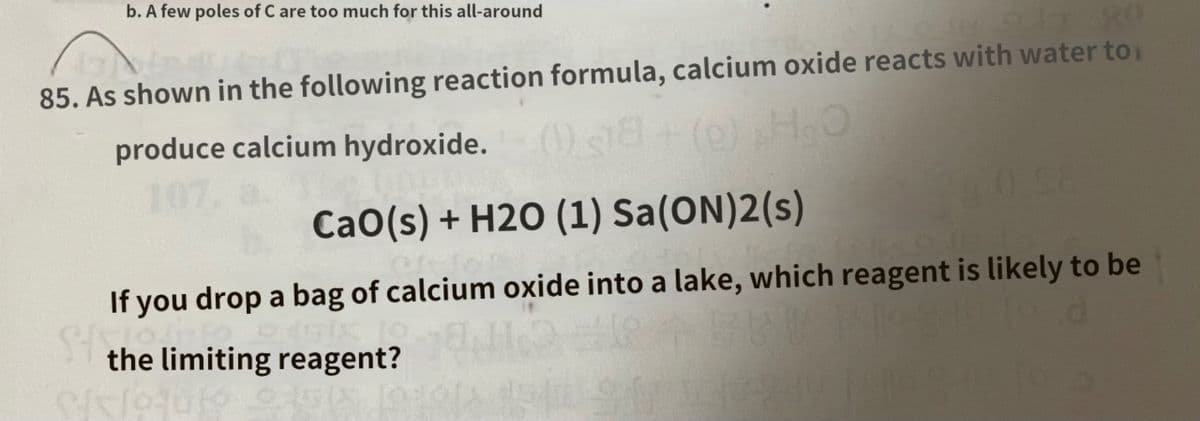b. A few poles of C are too much for this all-around 85. As shown in the following reaction formula, calcium oxide reacts with water to produce calcium hydroxide.(18+ (0) H₂O CaO (s) + H2O (1) Sa(ON)2(s) T If you drop a bag of calcium oxide into a lake, which reagent is likely to be Sttholin the limiting reagent?
b. A few poles of C are too much for this all-around 85. As shown in the following reaction formula, calcium oxide reacts with water to produce calcium hydroxide.(18+ (0) H₂O CaO (s) + H2O (1) Sa(ON)2(s) T If you drop a bag of calcium oxide into a lake, which reagent is likely to be Sttholin the limiting reagent?
Principles of Modern Chemistry
8th Edition
ISBN:9781305079113
Author:David W. Oxtoby, H. Pat Gillis, Laurie J. Butler
Publisher:David W. Oxtoby, H. Pat Gillis, Laurie J. Butler
Chapter2: Chemical Formulas, Equations, And Reaction Yields
Section: Chapter Questions
Problem 46AP
Related questions
Question

Transcribed Image Text:b. A few poles of C are too much for this all-around
85. As shown in the following reaction formula, calcium oxide reacts with water to
produce calcium hydroxide. (1) 18+ (0) HO
CaO(s) + H2O (1) Sa(ON)2(s)
200 58
If you drop a bag of calcium oxide into a lake, which reagent is likely to be
St the lim
the limiting reagent?
Expert Solution
This question has been solved!
Explore an expertly crafted, step-by-step solution for a thorough understanding of key concepts.
Step by step
Solved in 2 steps with 1 images

Knowledge Booster
Learn more about
Need a deep-dive on the concept behind this application? Look no further. Learn more about this topic, chemistry and related others by exploring similar questions and additional content below.Recommended textbooks for you

Principles of Modern Chemistry
Chemistry
ISBN:
9781305079113
Author:
David W. Oxtoby, H. Pat Gillis, Laurie J. Butler
Publisher:
Cengage Learning

Principles of Modern Chemistry
Chemistry
ISBN:
9781305079113
Author:
David W. Oxtoby, H. Pat Gillis, Laurie J. Butler
Publisher:
Cengage Learning